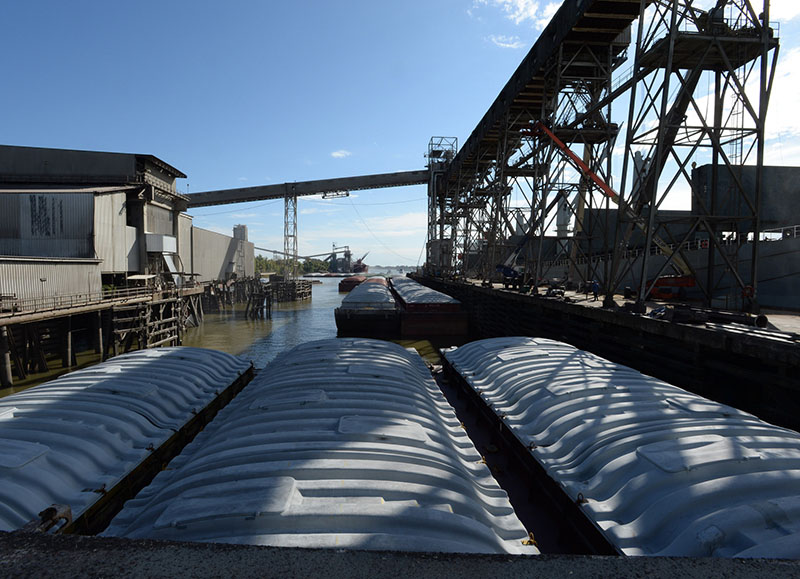An oversupply of covered barges and good weather in 2016 drove inland barge rates to record lows — a good deal for farmers, but barge operators could be dealing with those market conditions for years to come, analysts said at the Inland Marine Expo (IMX) in St. Louis Monday.
“Last year we had near-perfect conditions and rates were at three-year lows,” said Alan Barrett, senior consultant with Informa Economics IEG, Memphis, Tenn., in a presentation on opening day at IMX. “Over the next five to six years it’s going to be difficult to bring this market back into equilibrium based on barge retirements.”
Optimistic grain forecasts led operators to add some 790 new barges in recent years, Barrett said. The U.S. Department of Agriculture’s grain forecasts panned out, but with good weather and river conditions, the “effective fleet size” performed as if there were 1,500 more barges available, said Informa senior vice president Ken Eriksen.
“Unless we get some rationalization” those rates will not come back up, absent weather or river conditions that tie traffic up, said Barrett. “Right now the covered barge is a little bit overbuilt, so we’ll see.”
Open barges are similarly in oversupply, and the decline of coal by 30% to 40% last year has worsened business for operators.
“So far this year we’ve had a new rebound of coal, but compared historically it’s still pretty low,” said Barrett. Economists say that uptick was driven by export demand, including weather disruption of Australian supplies to Asia.
But “the long-term theory is … there are still a lot of (domestic) utilities that are going to shut down (coal power plants) and be replaced by natural gas,” said Barrett.
On the liquid side, there is overcapacity too. But operators could see some slow recovery in demand as the U.S. economy and oil come back, aided by an anticipated $100 million in chemical plant and refinery investment.
“We think the market is starting to show some signs of recovery,” said Chaz Jones, a transportation analyst with Informa. But it will not be in crude oil, he added.
New pipelines have contributed much to overcapacity now on the barge side, said Jones: “I’m not sure you going to see crude come back on the rivers.”
Instead, industrial and petrochemicals and ethanol are likely growth areas. Already when it comes to crude oil, “we just don’t see a lot of it,” said Dan Lester, commercial manager for the Watco Companies LLC, operators of terminals and short-line river and rail transport.
In recent years Watco acquired 55 terminals from Kinder Morgan and has “a fairly positive outlook” on liquid transport markets, Lester said. There is potential in ethanol, as producers look to expand their export market, said Lester and Marshall Steves, an Informa energy analyst.
Tank barges can give ethanol plants in Iowa and Nebraska more access to export markets through the Port of New Orleans, and Watco has looked at old coal terminals along the Mississippi River that have the potential to convert to ethanol shipping — existing railroad tracks, and space to build storage tanks, said Lester.
“These are spots where we see an opportunity to make that happen,” he said. Ethanol will not replace the lost crude oil volume, but “it can definitely supplement what’s out there.”





